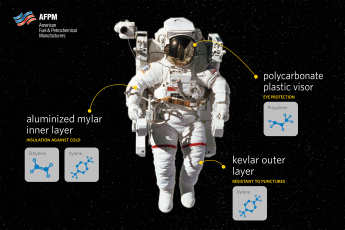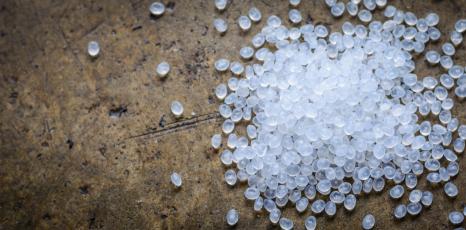The first Tour de France was held in 1903. 60 cyclists rode over unpaved roads without helmets, comfortable bikes or other modern technologies. Today the race has evolved to a total of 21 stages covering almost 2,200 miles. In recent years, an increase in technological developments has allowed cyclists to ride faster and to make one of the world’s toughest cycling events a bit more comfortable. Riders know that shaving a few seconds off during each course of the race can be the difference between second place and earning the coveted yellow jersey.
The carbon fiber composite bike frames incorporate a variety of petrochemical-based products. Such products range from “Spartacus’ Throne” (type of bike seat) to the tires, both of which are made from elastomers such as styrene-butadiene rubber. The bike seat includes the elastomer between the cover and base to provide impact relief while the seat design is claimed to improve aerodynamics. The tires provide an important source of suspension as well as the key forces needed for everything from balance to braking. The racers’ helmets play an important role in overall safety in case of an accident as well as providing both ventilation and potentially an “aerodynamic” advantage over other competitors.
Key petrochemical building blocks such as ethylene, propylene, butadiene, styrene, and benzene, are critical to the modern cycling helmet. The helmet shell is made from polycarbonate or acrylonitrile-butadiene-styrene (ABS) while the helmet liners are mostly molded in expanded polystyrene (EPS) foam. The top-end helmets require internal reinforcement and use a variety of materials such as nylon or polypropylene for reinforcement. In addition, helmet straps are generally made of nylon or polypropylene. The cycling jerseys were developed using petrochemical-based products as well. The short sleeves are made of a seamless elastane blend fabric (e.g., polyester made from building block petrochemicals like ethylene and benzene) for added comfort. The mid-length zipper and back ventilation panels made from polyesters encourage air circulation. And last but not least, a key part of Tour de France success is staying hydrated. One of the newer technologies is the bottle vest. The vest, made from polyester, allows the support rider to transport filled bottles from the team car to the contending riders.
Previously riders had bottles stuffed down their race jerseys meaning that when they reached their teammates they had to cumbersomely remove the bottles from under their jerseys and hand them out. The simple new system allows for the support team to prepare the bottle vests and hand them to a teammate who can safely hand out the much appreciated water. Petrochemical-based technology is a critical part of the Tour de France. More developments are created every year to try to make it a little bit easier for the riders to complete the hardest ride of their life.


